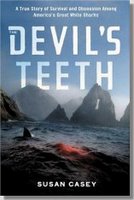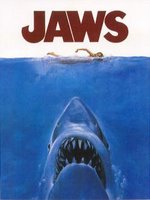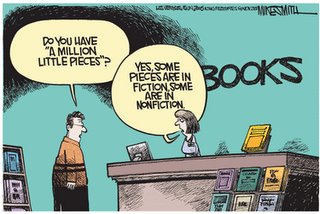 Marian Anderson’s quote on racism, “There were times when we heard our relatives and friends talking, and we knew we might come in contact with this, that, or the other thing.” p39
Marian Anderson’s quote on racism, “There were times when we heard our relatives and friends talking, and we knew we might come in contact with this, that, or the other thing.” p39
What a nice way of thinking of such ugly treatment, undeserving of a name. This reminds me of a universal self-preservation tactic. We tend to forget the names of those people who are rude or hateful when discussing them amongst others. For example, “oh, what’s her name” or “what’s his face” instead of saying the offending name. Is it because, to say the name, it conjures the person? Could Marian Anderson be experimenting with the same magic? To say the word is to cause it to happen?
“…if one only searched one’s heart one would know that none of us is responsible for the complexion of his skin, and that we could not change it if we wished to, and many of us don’t wish to, and that this fact of nature offers no clue to the character or quality of the person underneath.” p42
Amen!
“‘Now I lay me down to sleep, I pray Thee, Lord, my soul to keep,’ the realization comes to him that there is Someone else to whom he can commit his soul when he cannot take care of it himself.” p96-7
For when the child’s bedtime prayer becomes the adult’s touchstone in crises, habits have meaning.
My Mission...Not Impossible...Make Mississippi Read!
Sunday, February 26, 2006
My Lord, What a Morning Notes
Wednesday, February 22, 2006
Color of Water (copy)
 James is eight years old when he notices something different about his mom. As she stands alone, away from the other mothers, he sees it. “Mommy, are you white?”
James is eight years old when he notices something different about his mom. As she stands alone, away from the other mothers, he sees it. “Mommy, are you white?”
“Why no child, I’m light-skinned.”
He then looks around to his brothers and sisters and notices their skin. Okay, that seems possible. Some of his brothers and sisters are dark and some are light.
Days later James decides to consult an older brother and his reply, “You’re adopted.” Adding insult to injury, “Your real mom is in jail.”
Fast forward to James’ junior year in college at Oberlin and he’s filling out forms requiring his mother’s maiden name. Right away James knows this is going to be like pulling teeth. His mother has always avoided questions about her background and this will be no exception.
After much hemming and hawing, Mrs. McBride Jordan reluctantly drops a bombshell. “My maiden name is Shilsky.”
Through the silent shock James fumbles out, “Can you spell that, Ma?”
“You’re in college,” she snaps. “You can spell. Figure it out yourself.”
James is just one of twelve siblings who struggle in the depressing conditions of New York City’s Red Hook Projects during the 1960s. It doesn’t help that his mother is the only white woman in the area. He worries for her safety, but she has three rules for her and her children’s success. Always put church and school first, and never tell anyone about your home life.
She may be evasive about her past, she may speak a different language when haggling with shopkeepers, she may even be poor and white, but Ruth McBride Jordan manages to see all twelve children through college. Her life is an incredible story and now that James has become a successful journalist it’s time to work that interview magic on Ma.
James is author James McBride and his moving memoir is titled, The Color of Water: A Black Man’s Tribute to His White Mother.
Tuesday, February 21, 2006
Talk vs. Discussion
Today, Margaret and I attended the Senatobia Book Club meeting at noon. The discussion, led by Carolyn Head, focused on the book The Color of Water by James McBride.
I thought great! I’ll finally get the chance to read and discuss this book with others. Well, maybe another time…Out of a room of twenty only five had read the book.
This presents a library lesson learned without pain or embarrassment. As presenter one expects the group to read the book before the meeting. My talk, including author’s biography and a short synopsis, would have lasted 15 minutes at the most. Then the floor would be open for discussion. Silence.
So, in essence, know thy audience or be prepared to do both book talk and discussion. In order to save time, I should make sure my weekly articles are more book talk slanted than review oriented. If called upon to speak, just add more to an article already written then practice, practice, practice.
Margaret raised this idea after suggesting Marley and Me as a book I could present to this group. I’m sure she doesn’t know that the first book talk I ever heard was her humorous and touching Jan Karon book, At Home in Mitford.
Man, the stampede for that book after the club let out was awe inspiring!
Sunday, February 19, 2006
Color of Water Notes
“Love didn’t come naturally to me until I became a Christian.” p38
I was so shocked when I read this. How sad, to turn away from your early religious teachings. I now see the attraction to reading this in my Mother’s second Sunday reading group.
“She never spoke about Jewish people as white. She spoke about them as Jews, which made them somehow different. It was a feeling every single one of us took into adulthood, that Jews were different from white people somehow.” p87
You still come across that same confusion when talking about the differences in the races. It never fails that a person will mention a Jew under the subtext of races when it's a religious matter. Reminds me how some people consider Africa a country and not a continent.
“Race was something he never talked about. To him it was a detail that you stepped over, like a crack in the sidewalk. He was a person who never seemed to worry.” p125
Mr. Hunter Jordan was from that generation where talk could only do so much. Why waste time yapping over things you can’t control or change. He had the mentality like most people his age to have fun where you could find it. A sort of depression era thinking, play the hand you’re dealt.
- I used to walk in the shade, with those blues on parade…
- I’m not ashamed, this Rover crossed-over…
- If I ever had a cent, I’d be rich as Rockefeller…
- Gold dust at my feet, on the sunny side of the street…
Friday, February 17, 2006
Guild @ the Grille Gang Pose
Thursday, February 16, 2006
Old Job/School Review
The following review was written for Dr. Joan Atkinson's class in the fall of 2004. The book along with, When Marian Sang, were my inspiration for the Marian Anderson Birthday Bash grant. It is so exciting to see it coming together.
Oh, the review is in Booklist form. They want you to pack info in 250 words or less, one block paragragh. You have a couple of choices, book talk or compare to another simialr book then wrap it up with "worthy or unworthy" purchase suggestion.
Click on the book and it should take you to the announcment for our February events! Staff Picks...The following reviews and suggested books have been compiled by members of the First Regional Library staff. If a title is highlighted, click on it to find more information about the book. **Last Updated 3/11/05.**
Staff Picks...The following reviews and suggested books have been compiled by members of the First Regional Library staff. If a title is highlighted, click on it to find more information about the book. **Last Updated 3/11/05.**
The Voice that Challenged a Nation: Marian Anderson and the Struggle for Equal Rights by Russell Freedman Reviewed by Maggie Moran, Como Public Library
It was a blustery Easter afternoon in 1939 when Marian Anderson sang to a crowd of 75,000. They came to hear her voice and as she ascended the platform built on the Lincoln Memorial the crowd hushed. The gray day seemed to fall away as the clouds broke open to accept the first song, “America.” Why was she singing outside on the Lincoln Memorial steps? Adequate indoor spacing could be found in Washington DC’s Constitution Hall, which as a DAR establishment unfortunately did not allow black artists to perform. Ironically she had just returned from a tour where she sang to mixed race audiences in all the major cities of Europe and South America, but was unable to perform in her own nation’s capital. Freedman brings this “rags to riches” story to life with the incredible photos of the time. This book reminds us that this woman’s struggle, which she handled as graciously as an operatic aria, should be revisited and hailed as a true heroine. No collection should be without this “sure to win an award” selection.
Wednesday, February 15, 2006
Devil's Teeth (copy)

Sad news for the literary world, Peter Benchley, author of Jaws passed away February thirteenth. He was only 65 and touring with his latest book, Shark Trouble, when he succumbed to idiopathic pulmonary fibrosis.
Jaws swept the reading public’s imagination in 1974, remaining on the New York Times bestsellers list for 40 weeks. This, Benchley’s first novel, not only made him famous it also made first time director Steven Spielberg a household name.
Benchley had regrets, although the book escalated his wealth, it also gave sharks a bad reputation. He was always quick to remind people it was a work of fiction, “real sharks don’t hold grudges.” Actually he became a shark conservationist and studied the prehistoric creatures extensively for Shark Trouble.
Remaining ever active in the sea world, just last year he descended the abyss in another steel cage along with his wife of forty years. Benchley had this to say about his Mexican coast observation:
"We went at a time when the females came in and the females were much larger than the males. And at times we would have 4 or 5 of the most gorgeous female torpedoes drifting by the cage. We were thrilled, excited. We'd been around sharks for so long."
These female Great White Sharks are described as “Sisters” in Susan Casey’s new book, Devil’s Teeth. Sisters, a nickname given by biologists Peter Pyle and Scot Anderson, are groups or “sisterhoods” of female white sharks that cruise the coast off Farallon Islands during shark season. The seventeen foot long behemoths have earned names like Betty, Mama and the Cadillac.
Farallon Islands (pronounced fair-alon) located just 27 miles east of San Francisco, can be considered within, “delivery status for a pizza.” During shark season, up to twenty white sharks may be circling these islands hunting otters or seals. Can you imagine 120 acres packed full prehistoric eating machines?
Devil’s Teeth exposes a secret society of sharks unheard of, beyond the sea legends of California. Biologist Pyle and Anderson have enjoyed fourteen years of uninterrupted studies, actually motoring out to the kills and filming the underwater drama. They refer to their little skiff, usually half the size of the circling sharks, as the “dinner plate.”
This non-fiction book is as informative as it is fun, packed full of harrowing, close-encountered shark stories. A book that would make Benchley proud, but still keeps me on dry land. A close encounter with Cal Ripfin, I can miss.
Tuesday, February 14, 2006
Peter Benchley dies at age 65

Peter Benchley died yesterday at the age of 65. His first novel Jaws enjoyed 40 weeks on the NY Times bestseller list. More importantly the book and movie nurtured a primal fear we all have of unseen things in cloudy waters.
This passage is from Newsday.com’s Benchley obituary by Valerie J. Nelson:
Originally titled "Silence in the Water," the book got its concise name after Benchley asked his father, children's author Nathaniel Benchley, to help him think of a title. His 200 suggestions included "Wha's That Noshin' On My Laig.' "
Another obit by Hillel Italie from Newsday.com reported that for their 40th anniversary the couple went into the ocean in one of those steel cages:
"We went at a time when the females came in and the females were much larger than the males. And at times we would have 4 or 5 of the most gorgeous female torpedoes drifting by the cage. We were thrilled, excited. We'd been around sharks for so long."
Maybe they saw the Sisterhood on their way to the Farallon Islands.
Sunday, February 12, 2006
Cal Ripfin & other Shark Names

Male and female sharks are extremely hard to tell apart, unless you get a good look at their bellies. A lot of times it is their length that gives the first hint of sex: So what do you think? ---->>>
“It might be Betty or Mama or the Cadillac, one of the huge females that patrolled the east side of the island. These big girls, all of them over seventeen feet long, were known as the sisterhood. Or it might be a ‘smaller’ male (thirteen to fourteen feet), like Spotty or T-Nose or the sneaky Cal Ripfin. These sharks were called the Rat Pack.” p3
Okay, there is this guy that is diving for urchins around the Farallon Islands that has seen possibly 3 to 4 hundred sharks during his time in the water. Wouldn’t a sane man after seeing his first, vow never to enter that area of the water again? Dude, are you mad?
“‘Ron’s all about competence,’ Peter said. Scot agreed, and marveled at Ron’s fearlessness. ‘People cry on the evening news if they see a dorsal fin in the surf,’ he said. ‘And here’s a guy who’s around them all day long and doesn’t want to tell anyone.’” p40
Ron, the urchin diver, will run out of luck at some point in his life. He’s already survived one “too” many close encounters, once actually jumping off his boat and landing on top of a seventeen foot Sister. A short documentary on his occupation as lone Farallon urchin diver has been produced and more information can be found at…
http://www.devilsteeth.com/
It just boggles the mind, how these prehistoric behemoths are cruising around the Farallons, as the book says, within pizza delivery radius of San Francisco. Will they still cruise the waters once their 777,000 neighbors start “Jaws” tours to the islands? Won’t this book entice curious readers to take a peek for themselves?
Some things might be better left unsaid, or in this case left unwritten.
Saturday, February 11, 2006
Hooked by Sharky Tale
I started Devil’s Teeth by Susan Casey a couple of nights ago, having read its review for best books from Booklist. I told you I read anything…even non-fiction books about sharks. Well, I was hooked from the first sentence in the introduction:
"The killing took place at dawn and as usual it was a decapitation, accomplished by a single vicious swipe."
Wow! What the heck is going on, just who or what has been beheaded? How could anyone walk away from such a violent start? The book continues:
"Blood geysered into the air, creating a vivid slick that stood out on the water like the work of a violent abstract painter."
I would think any reluctant male reader would at least finish the paragraph before looking around to see if anyone judged him un-cool. Maybe, actually reading three, lost in the book, before remembering his surroundings.
Does YALSA know about this book?
Friday, February 10, 2006
Tuesday, February 07, 2006
Threading the Generations (copy)
 Since the dawn of time, parents have handed down family treasures to their offspring. Often these heirlooms have a significant story attached. The children then accept responsibility for two legacies, the object and the story.
Since the dawn of time, parents have handed down family treasures to their offspring. Often these heirlooms have a significant story attached. The children then accept responsibility for two legacies, the object and the story.
What if you found yourself in possession of not only one family heirloom but fifty? All objects possessing unique stories, from different family members, and different time periods. This is the surprising dilemma faced by Mrs. Elizabeth (Libby) Hollingsworth, one fall afternoon in 1996.
According to Carol Vickers, co-author of Threading the Generations, Libby was just one of thousands of Mississippians who participated in a statewide Mississippi Heritage Association Quilt-Swap. Yet, her quilts were the highlight of Vickers two year quest to document and photograph Mississippi quilts.
Libby arrived early that morning, with five quilts (the limit) from her home. It was a slow day for the Port Gibson event, so Libby went back home and got five more. By the end of the day 29 of her family quilts, spanning four generations, were documented out of a personal collection of 50.
Authors, Mary Elizabeth Johnson and Carol Vickers, took Libby’s quilts and created a unique book that tells the story of one family’s Mississippi life through a timeline of their quilts. Four generations threading tales just as unique as their hand-made pinwheels and nine patches.
The first tale begins in 1813, when A.K. Shaifer dismounts his horse with great relief at Gibson Landing. His rheumatism is flaring and he happens to have friends on this leg of his Natchez Trace journey. The Humphreys take him in and he never returns to his East Tennessee home, instead marrying their daughter Betsey.
Energetic A.K. is quite successful and builds Holly Hill Plantation in 1826. Unlike his fellow farmers dealing in cotton, A.K. plants a variety of fruits and vegetables, becoming known as the “bread basket” of the area. His other successes include incorporating present day Port Gibson and establishing the first public library in Mississippi. Now, was it really a "bout of gout" or true love?
Threading the Generations: A Mississippi Family’s Quilt Legacy is a wonderful day read with beautiful quilt photos by Clarion-Ledger photographer, J.D. Schwalm.
Work in Progress
Since the dawn of time, parents have offered offspring objects from their past. We refer to them as heirlooms. Attached to the object comes a story of great importance to the elder. The offspring then become owners of two gifts, the object and the story.
What if you found yourself in possession of not only one family heirloom but fifty? All objects possessing unique stories, from different family members, and different time periods. This is the surprising dilemma faced by Mrs. Elizabeth (Libby) Hollingsworth, one fall afternoon in 1996.
According to Carol Vickers, co-author of Threading the Generations, Libby was just one of thousands of Mississippians who participated in a Mississippi Heritage Association Documentation Day. Yet, her quilts were the highlight of Vickers two year quest to document and photograph Mississippi quilts.
Libby arrived early that November morning in 1996, with five quilts from her home. It was a slow day for the Port Gibson event, so Libby went back home and got five more, the set limit. After documenting those, she returned with five more and by the end of the day had documented 29 of a collection numbering in the fifties.
Authors Mary Elizabeth Johnson (Huff) and Carol Vickers, took Libby’s quilts and created a unique book that tells the story of one family’s Mississippi heritage through a timeline of their family’s quilts.
Saturday, February 04, 2006
9 Patch Difference
 Just finished Threading the Generations by Mary Elizabeth Johnson (Huff) and Carol Vickers. I was struck by two, nine patch quilts photographed. They were so elaborate versus the Amish 9 patch which is described in Plain and Simple by Sue Bender. Both quilt types are made from scraps of shirts and dresses yet the Amish have a background laid with only nine patches and the MS quilters have nine patches per block. One such MS 9 patch creates an H design by placing a lighter color in the second and eight slot.
Just finished Threading the Generations by Mary Elizabeth Johnson (Huff) and Carol Vickers. I was struck by two, nine patch quilts photographed. They were so elaborate versus the Amish 9 patch which is described in Plain and Simple by Sue Bender. Both quilt types are made from scraps of shirts and dresses yet the Amish have a background laid with only nine patches and the MS quilters have nine patches per block. One such MS 9 patch creates an H design by placing a lighter color in the second and eight slot.
Johnson and Vickers traveled the state of Mississippi in 1995 through 1997 documenting quilts in the different regions. Their goal was to locate rare quilts made before 1946 and record their designs, fabrics, dyes and stitches per inch. I personally remember one of their last stops on the project was Batesville, MS.
In 1996 the Mississippi Quilts Association sponsored a quilt-share in Port Gibson and Libby Shaifer Hollingsworth brought five (the limit) to be documented. It was a small turn out so Mrs. Hollingsworth went home and got five more. By the end of the day she brought in 29 quilts, spanning four generations, and a book idea was born.
Both Johnson and Vickers with their respective husbands came to the Como Library in 2001. Through a grant from the MS Humanities Council we sponsored a book signing and MS quilt program. I was totally embarrassed with the meager turn out but the ladies were gracious and presented a fascinating program.
From the program:
- Rare to find quilts in the Delta region because of flooding. Most were used to sop up mud and water when the Mississippi overflowed.
- Quilt batting could be an indication of quilt origin. I have some wool stuffed quilts indicative of Middle Tennessee where my great-grandmother Maggie carded her own wool. Mississippi quilts were usually stuffed with cotton and a wool quilt may be older, having come from another region.
A surprise to us all, Ovid Vickers, Carol's husband is a syndicated columnist and wrote about the B&B. Kay was pleased and my hope is she generated some business from the free but well deserved praise.
Wednesday, February 01, 2006
Marley and Me (copy)
 We were mere newlyweds in 1991 when we strolled into the Memphis Humane Society’s shelter for animals. Eager to start a family, we first intended to raise healthy, happy pets. The goal that day was a puppy, one who would fit well into our current family. A family already ruled by one cat.
We were mere newlyweds in 1991 when we strolled into the Memphis Humane Society’s shelter for animals. Eager to start a family, we first intended to raise healthy, happy pets. The goal that day was a puppy, one who would fit well into our current family. A family already ruled by one cat.
We never made it past the entrance into the cages. Located on a table in the hall we caught the eye of one black hairy fuzz ball. The tail wiggling so pronounced we watched as the wire cage worked its way to the edge of the table. What an eager greeting and we hadn’t even been introduced yet. Keeper!
A more experienced dog owner might have continued past the black flurry of motion for a calmer more bumbling pup. A wiser person would recognize this behavior might not be the “peaceable kingdom” we foresaw. If we had known this energy ball would eventually redecorate our whole home with one feathery tail, being three parts Labrador and one part Springer, well…
Marley and Me by James Grogain is an outstanding book for dog lovers. People tend to place their beloved dogs in the category of sainthood once they pass. Grogain is no exception with his memories of childhood Saint Shaun, the dog who could do no wrong. Then he obtains Marley, the Labrador whose, “default setting was stuck on eternal incorrigibility.”
Marley maintains the same tail gyrating infliction that our puppy produced. In Marley’s case it is called the Marley Mambo and he is particularly active when trying to engulf a “not on the menu” item. Author Grogain goes into hilarious detail on the loss of a new 18K necklace from point of digestion to elimination.
Marley and Me is a surprise bestseller, number two on the New York Times list, and steady. Who knew the “world’s worst dog” would be held in such high esteem? This is not the idealized dogs of Willie Morris’ My Dog Skip or Jack London, but a down and dirty, roll in the stench, mistake-laden mess.
This book makes a perfect read-aloud for children and/or elderly parents. The book presents a great opportunity for dog owners all over America to reflect on “man’s best friend.” We all really had a dog more like Marley than Lassie, sometimes it is just hard to admit.





